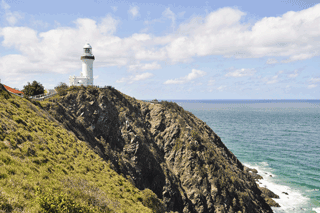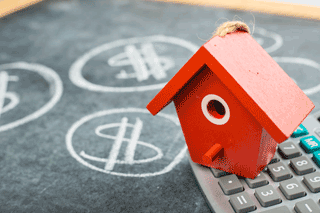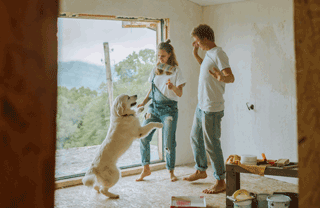Quote of the Week
“No doubt the more affordable housing options across many of Australia’s regional markets is another incentive. In April there was a $247,400 difference between the median value of capital city dwellings and regional dwellings.”
CoreLogic research director Tim Lawless, commenting on the higher price growth in regional areas.
Investor Optimism On The Rise
 Investor sentiment is improving while home-buyer confidence is falling, according to ME Bank’s latest Quarterly Property Sentiment Report.
Investor sentiment is improving while home-buyer confidence is falling, according to ME Bank’s latest Quarterly Property Sentiment Report.
The second quarter of 2021 saw the overall sentiment in the residential property market decline by 7 percentage points to 42% following record-high sentiment in the first quarter. But investors recorded the highest level of positive sentiment at 52%.
According to ME’s Claudio Mazzarella, sentiment trends have changed following the rapid rise of the property market post-pandemic.
He says the fall in prices in some cities last year created an opportunity for first-home buyers, but many investors became nervous. Now prices have rebounded and affordability is going down, FHBs aren’t as positive but investors have become active.
One of the main contributors is the drop in available properties: 60% of respondents believe there “isn’t enough choice in the current market”.
Regional Market Doubles Cities Growth
 Regional Australia has been the biggest beneficiary of the booming market, with price rises averaging 13% over the past 12 months. This was double the growth rate in the capital cities, where price gains averaged 6.4%, according to CoreLogic’s Regional Market Update.
Regional Australia has been the biggest beneficiary of the booming market, with price rises averaging 13% over the past 12 months. This was double the growth rate in the capital cities, where price gains averaged 6.4%, according to CoreLogic’s Regional Market Update.
SQM Research reports that house prices nationally have risen 12.7% in the past year, but only 5.6% in the combined capital cities, confirming the biggest growth is in the regions.
The CoreLogic report says Richmond-Tweed in NSW (which includes Byron Bay and Lennox Head) took the top spot for capital gains for both houses (22%) and units (15.5%).
CoreLogic research director Tim Lawless says: “This can partly be explained by the ongoing popularity of remote and flexible working arrangements, but also increased demand for lifestyle properties and holiday homes.”
A net 43,000 moved to regional areas from capital cities in 2020, according to ABS figures – the largest net inflow to the regions since the series began in 2001.
Global Price Rises Defy Covid
 It’s not just Australia – across the world, residential real estate prices are rising.
It’s not just Australia – across the world, residential real estate prices are rising.
It wasn’t long ago that real estate experts everywhere were bracing for the worst. The pandemic had sent the world into lockdown, shuttering businesses, costing tens of millions their jobs and putting housing markets into a deep freeze. The number of people asking lenders to pause their mortgage payments surged.
The fear was that house prices would collapse, rising unemployment would make it hard for home-owners to pay the mortgage and those who owned second homes would have to sell.
But house prices have soared even as the world suffered its worst slump since the Great Depression. From New Zealand to the US, Germany, China and Peru, the same phenomenon has taken hold: prices are rising.
Among the 37 wealthy countries that make up the OECD, real house prices rose 7% in 2020 — the fastest year-on-year growth in the past two decades.
Renovation Spend Hits Record
 Australians are spending a $1 billion per month on renovations in a boom partly fuelled by government stimulus that has seen the number of home alterations at record highs.
Australians are spending a $1 billion per month on renovations in a boom partly fuelled by government stimulus that has seen the number of home alterations at record highs.
There were 2,050 private residential renovations approved in March in NSW valued at a total of $354 million – another increase from the 1,850 approved in February.
ABS figures going back to July 2016 show this was the first time the value of renovations approved in NSW in a single month topped the $300 million mark.
Nationally, the same data set shows the value of home renovations approved each month passed the $1 billion mark for the first time in February, then grew to $1.14 billion in March. In 2019, the monthly average was $680 million.
In Victoria, there were 3,062 additions and alterations approved in March – another record – worth $373 million. In Queensland there were 3,352 approvals worth $255 million.
Clearances Remain Close To 80%
 Auction volumes were down slightly last week, but clearance rates remained close to 80%.
Auction volumes were down slightly last week, but clearance rates remained close to 80%.
A total of 2,892 homes were auctioned across the combined capital cities, compared with 3,016 the previous week.
Preliminary results indicate a 79% success rate, while the preliminary clearance rate for the previous week was 78%, which was revised down to 77.2% in final figures.
Sydney was the standout performer, with auction volumes remaining steady, while the final clearance rate has held above 80% for 13 of the past 14 weeks.
In Melbourne, the number of homes taken to auction fell but the reported success rate was up at 77.6%, from 74.1% the previous week.
The best preliminary clearance rate was Canberra with 88%, while 60% of reported auctions in Perth were successful.
In the regions, which have proved extremely popular during the pandemic as house hunters seek better lifestyles, every property in Newcastle and Lake Macquarie that went up for auction was sold.




